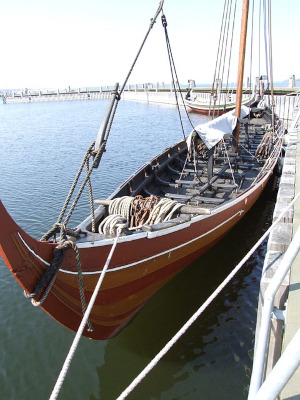We all know about the different nations that contributed to history and made our world the place we know it today. One of these folk groups were the Vikings, who were in power for a long time and influenced the whole European continent due to their trading routes and connections that they established. They also had a big impact on the economic status of Europe. With this influential history, Vikings are known to this day, and their legacy still lives on. With many museums, documentation, reports, and exhibits, people today learn about them and their way of life.

From the 9th to the 11th centuries, the Vikings were a powerful sailing folk that were from Denmark, Norway, and Sweden. They conquered and colonized many lands and areas, especially in Scandinavia but also in the rest of Europe. The term “viking” can be translated to “pirate”.
But how did the Vikings look? In Denmark, there have been about 500 Viking skeletons that tell us more about their appearance and what they might have looked like. Because of their Nordic descent, they probably had red or blonde hair and were quite strong due to the heavy physical work they did. The difference between male Vikings then and men today is that they had a more feminine facial structure than men nowadays. For women, it was the exact opposite. Female Vikings had more of a male facial structure with wider brow ridges.
Most of them had full beards, and the women wore their hair tied into knots or braided.
Other than that, Vikings only had a life span of around 35–40 years because many died from diseases. Many of them had already died when they were only newborns. They also had plants that treated diseases and illnesses, but it is uncertain how much they really knew about how to use them. Many of the Viking skeletons also suffered tooth loss and many holes in their teeth at the time of death.
Furthermore, the clothes the Vikings wore were mostly woven by the women out of regional materials like flax and wool. The men and boys wore tunics, and the women and girls wore dresses on top of their undergarments. Of course, the clothing varied depending on gender, age, and social status.
Viking women had a special place in their society since they could achieve a wealthy lifestyle and were able to surpass the power held by their husbands. Some of the female Vikings became powerful queens who were highly appreciated and worshipped. Also, your occupation as a seeress could earn you a lot of respect.
Furthermore, the Viking community was also very progressive for its time because, next to marriage (which a lot of ethnic groups had in some form), there was also a divorce ceremony, which was quite uncommon at these times. They had a lot of rules for this ceremony that had a strong resemblance to a legal system. The typical reasons for divorce were violent behavior against the woman or an unwealthy husband (the woman mostly strived for a rich man who could enable them a good life).
Sources:
https://www.britannica.com/topic/Viking-people
https://klexikon.zum.de/wiki/Wikinger
https://courses.lumenlearning.com/atd-herkimer-westerncivilization/chapter/the-vikings/#:~:text=The%20Vikings%20established%20and%20engaged,development%20of%20Europe%20and%20Scandinavia.
https://en.natmus.dk/historical-knowledge/denmark/prehistoric-period-until-1050-ad/the-viking-age/the-people/viking-homes/#:~:text=Most%20Vikings%20lived%20on%20a,%2C%20barns%2C%20stables%20and%20workshops.
